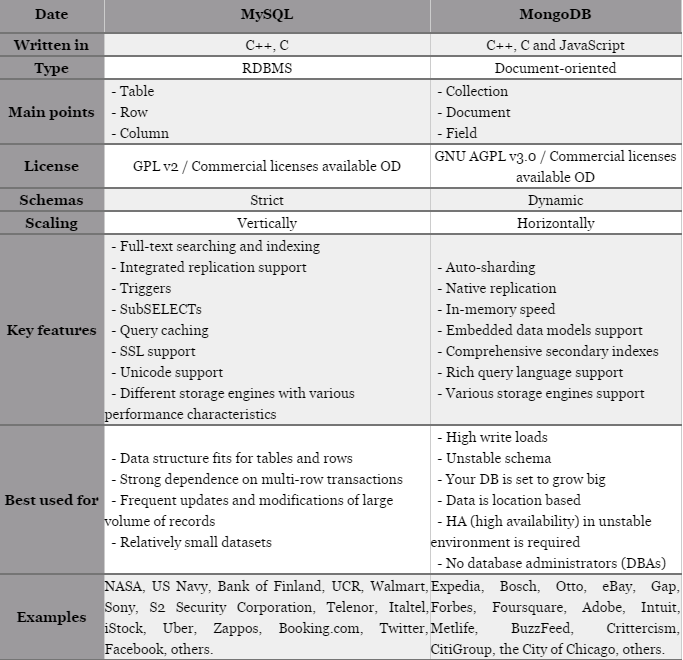#WIP
Advantages of using mongodb ( as per tutorialspoint article)
-
Schema less − MongoDB is a document database in which one collection holds different documents. Number of fields, content and size of the document can differ from one document to another.
-
Structure of a single object is clear.
-
No complex joins.
-
Deep query-ability. MongoDB supports dynamic queries on documents using a document-based query language that's nearly as powerful as SQL.
-
Tuning.
-
Ease of scale-out − MongoDB is easy to scale.
-
Conversion/mapping of application objects to database objects not needed.
-
Uses internal memory for storing the (windowed) working set, enabling faster access of data.
-
Document Oriented Storage − Data is stored in the form of JSON style documents.
-
Index on any attribute
-
Replication and high availability
-
Auto-sharding
-
Rich queries
-
Fast in-place updates
-
Professional support by MongoDB
- Big Data
- Content Management and Delivery
- Mobile and Social Infrastructure
- User Data Management
- Data Hub
- Not strongly ACID-compliant (Atomic, Consistency, Isolation, Durability) as the more well-established RDBMS systems. Complex transaction
- No function or stored procedure exists where you can bind the logic
- Import dataset into mangodb
-
Connect with spark and mongodb using spark connector
-
Write rest api to get call and fetch data
calling url :
http://localhost:8080/books/test http://localhost:8080/swagger-ui.html
- Introduction to the Functional Web Framework in Spring 5
- Spring 5 WebClient
- Exploring the Spring 5 WebFlux URL Matching
- Reactive WebSockets with Spring 5
- Spring Webflux Filters
- How to Set a Header on a Response with Spring 5
- Spring Webflux and CORS
- Handling Errors in Spring WebFlux
- Server-Sent Events in Spring
- A Guide to Spring Session Reactive Support: WebSession
- Validation for Functional Endpoints in Spring 5
- Logging a Reactive Sequence
- Testing Reactive Streams Using StepVerifier and TestPublisher
- Debugging Reactive Streams in Spring 5
- Static Content in Spring WebFlux

